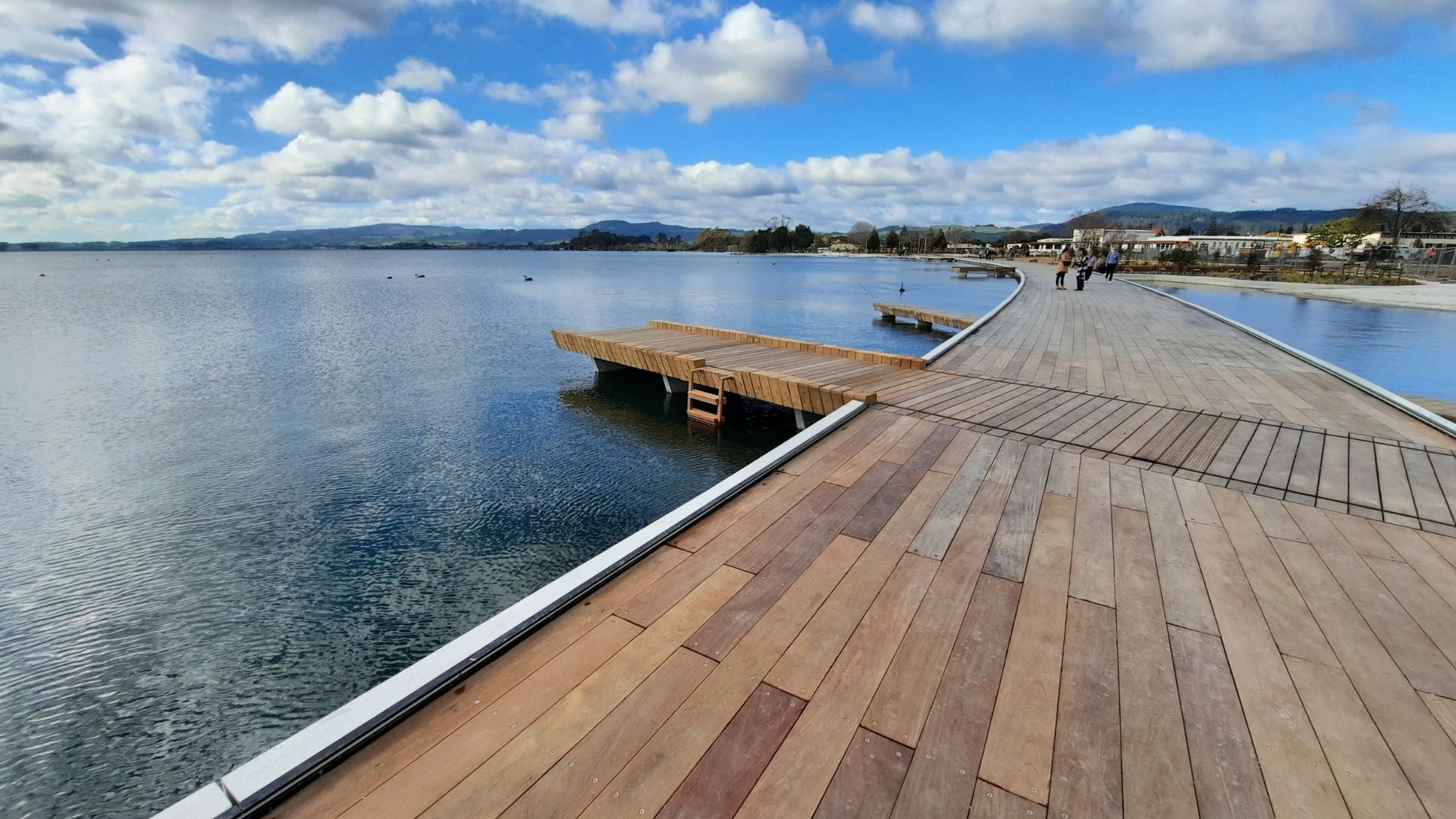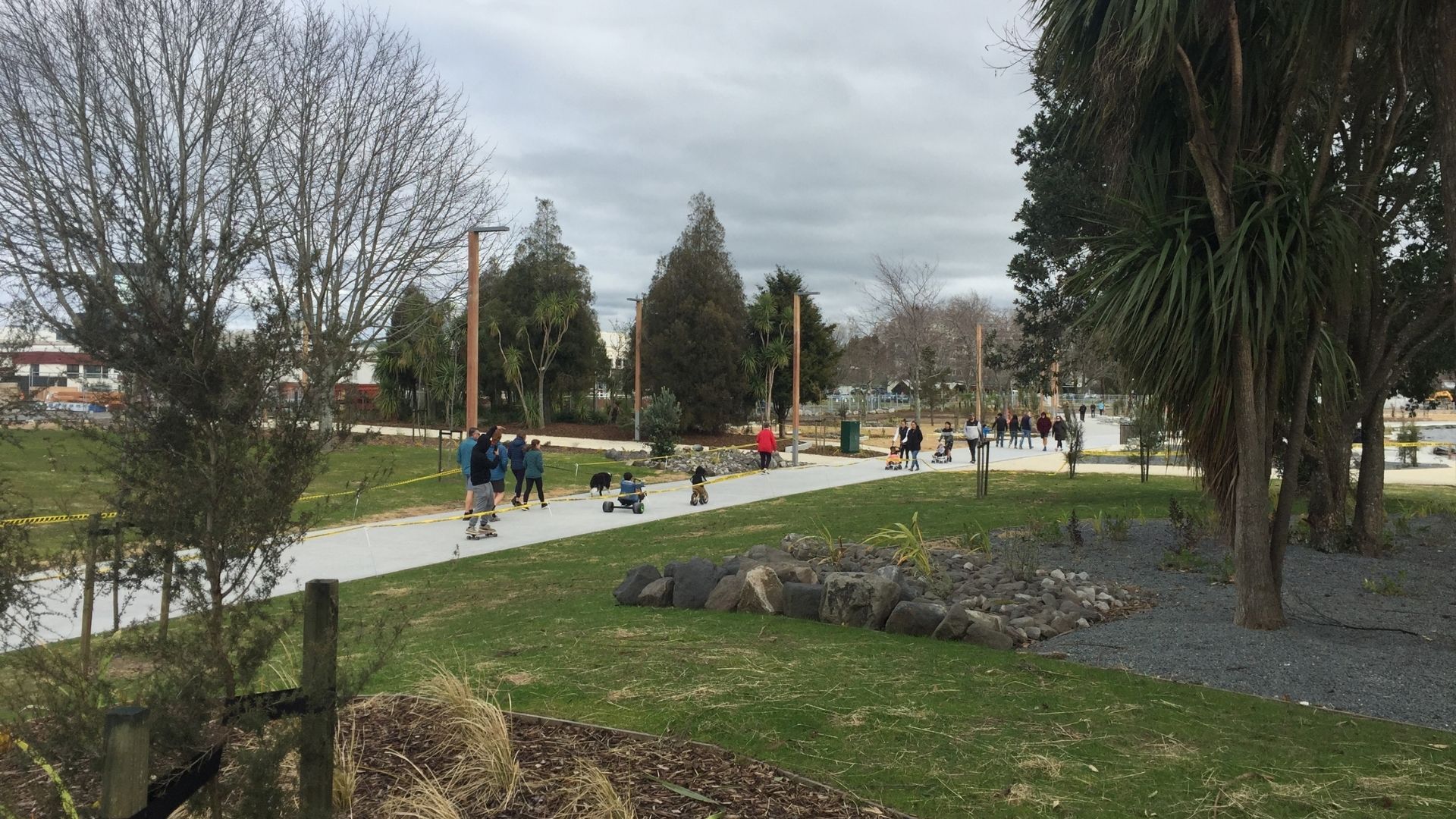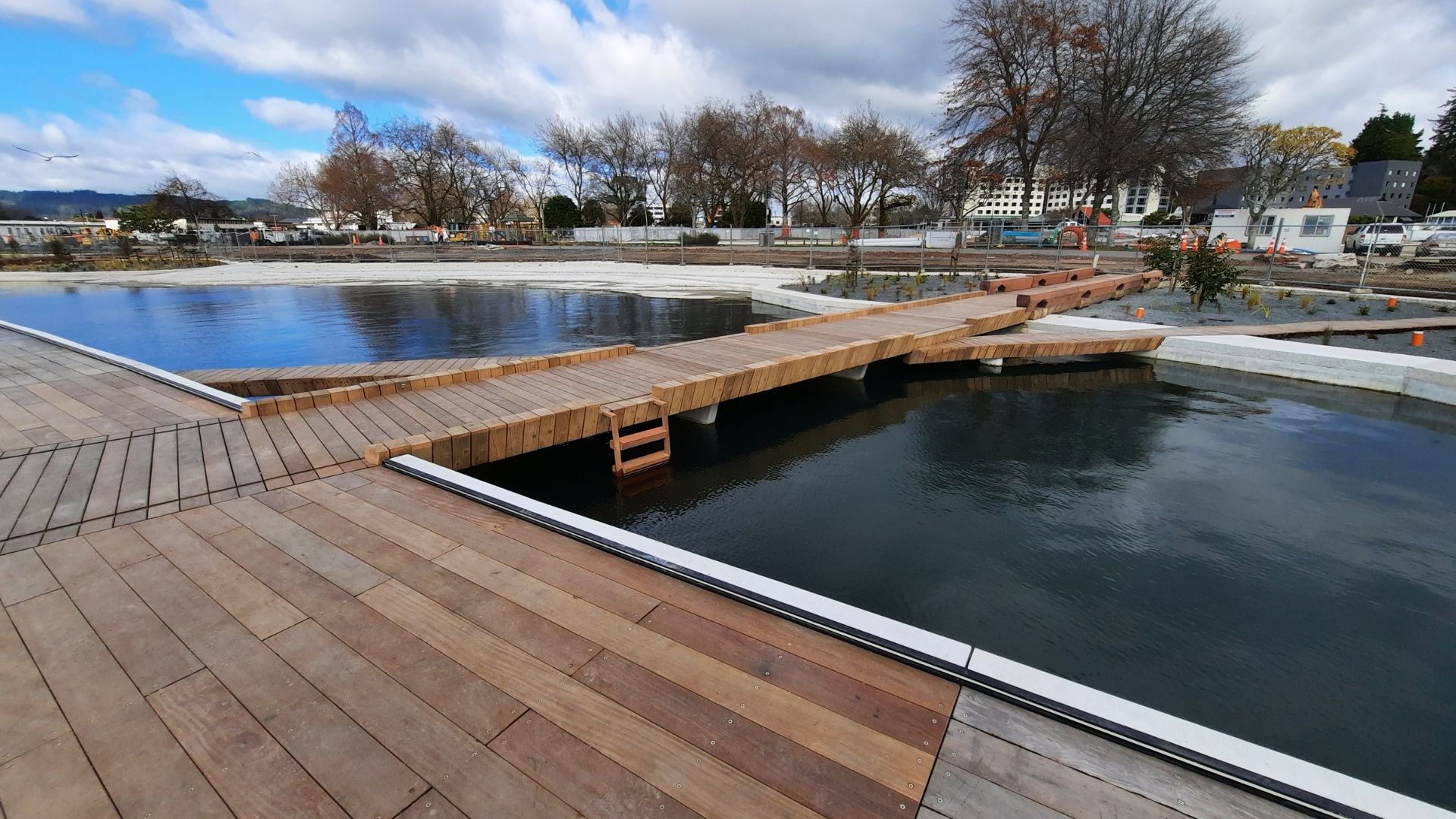Lake Rotorua
Lakes & Rivers
The largest of our region’s lakes, Rotorua is a volcanic caldera, formed from the crater of a large volcano.
Rotorua city, located along the southern shore, was named after the lake, shortened from its full name, Te Rotorua nui ā Kahumatamomoe. This name was given by the explorer Ihenga, a grandson of the captain of Te Arawa canoe Tamatekapua.
Lake Rotorua is shallow and the most productive trout fishery in New Zealand, with both rainbow and brown trout in large numbers making it extremely popular for fishing.
The area has recently undergone significant redevelopment, and the new boardwalk which opened in July 2021 features multiple wider pathways alongside the shore, projecting into the lake, and criss-crossing in some areas. They're perfect for enjoying the waterfront by foot or bike.
New and larger playgrounds, more picnic tables, two food vendors, and a new toilet block have also been added.
Work on the western end of the lakefront is underway, including the Whare Waka for the Te Arawa Waka Taua, and space for commercial activities.
Lake Rotorua is shallow and the most productive trout fishery in New Zealand, with both rainbow and brown trout in large numbers making it extremely popular for fishing.
Rotorua Lakefront
The Rotorua Lakefront is a central hub for locals and visitors to enjoy, and home to a number of lake-based tourism activities.The area has recently undergone significant redevelopment, and the new boardwalk which opened in July 2021 features multiple wider pathways alongside the shore, projecting into the lake, and criss-crossing in some areas. They're perfect for enjoying the waterfront by foot or bike.
New and larger playgrounds, more picnic tables, two food vendors, and a new toilet block have also been added.
Work on the western end of the lakefront is underway, including the Whare Waka for the Te Arawa Waka Taua, and space for commercial activities.


